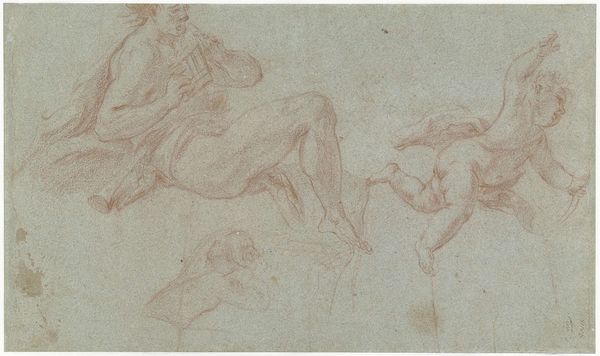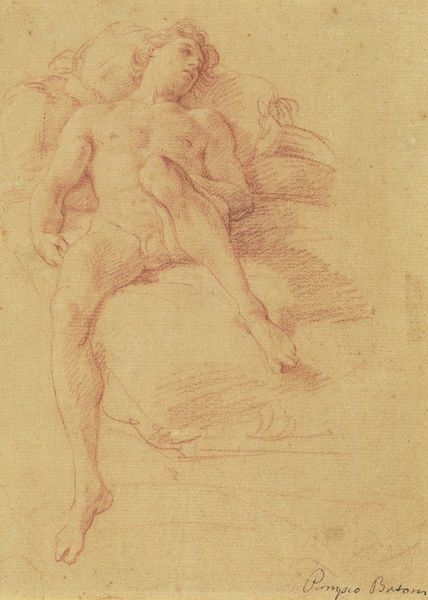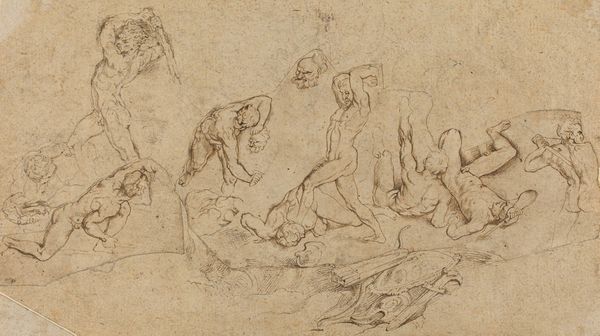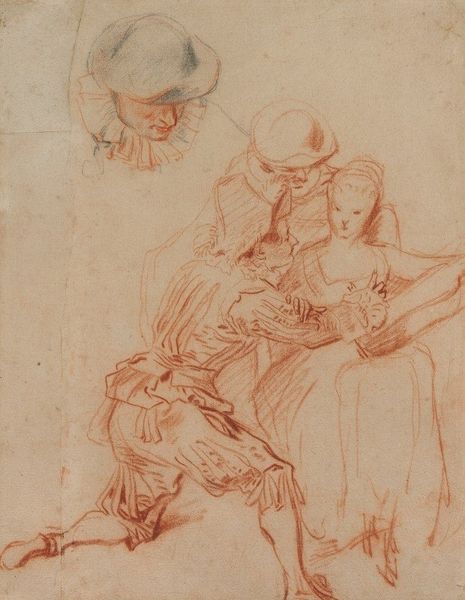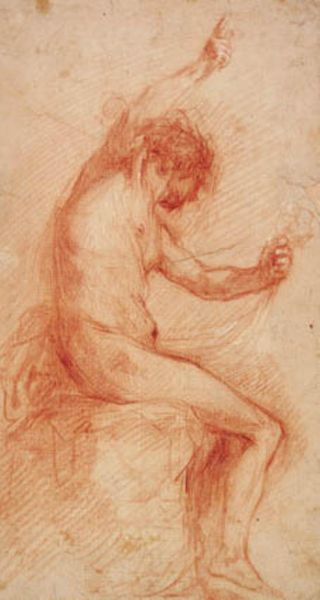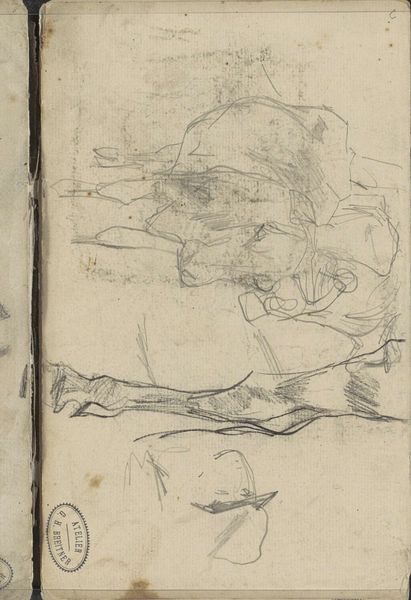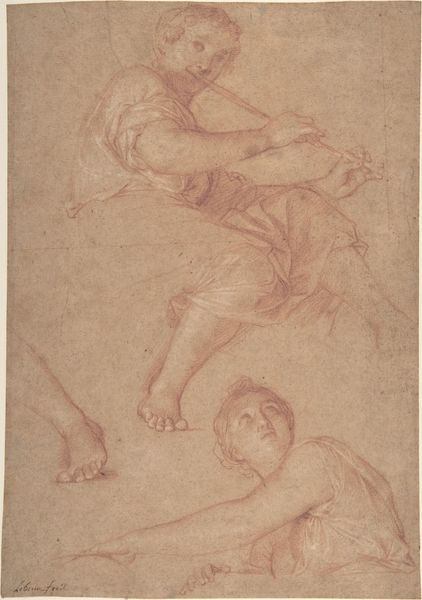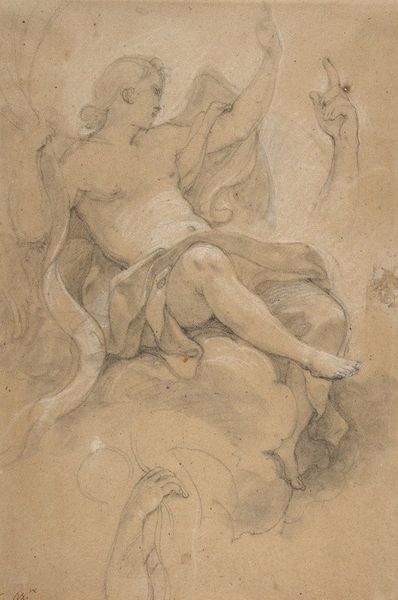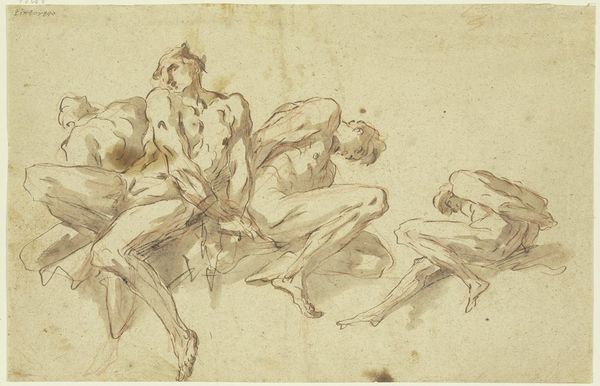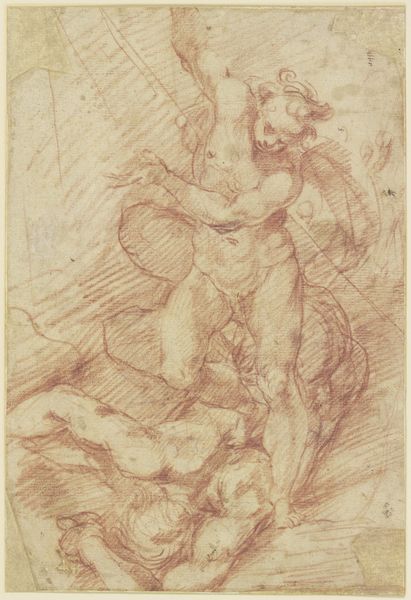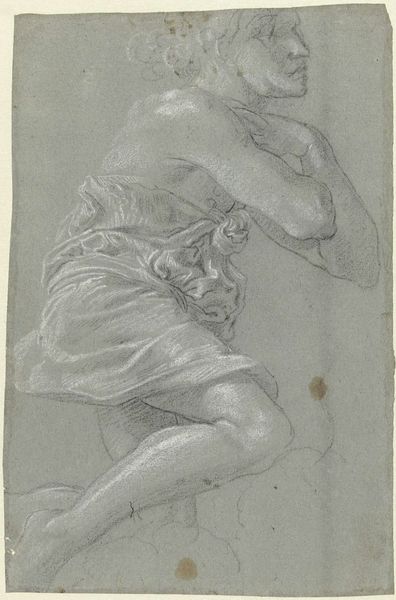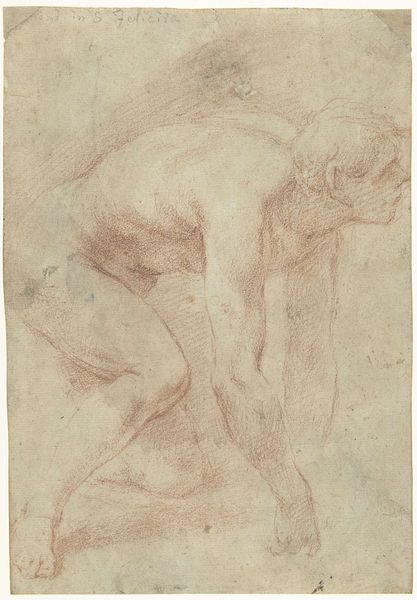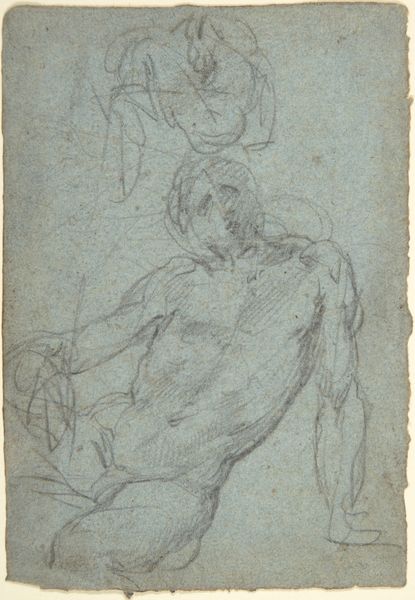
drawing
#
drawing
#
baroque
#
figuration
#
nude
Copyright: Public Domain: Artvee
Curator: Immediately striking! The terracotta hue and soft lines create a feeling of tender vulnerability, wouldn’t you agree? Editor: Yes, there's a clear intention to highlight youth and fragility through this delicate use of red chalk. This is “Two Nude Children Lifting a Cudgel” by Pompeo Batoni, circa 1748. Note the laid paper—very typical for drawings during the Baroque period. Curator: It is so interesting how the apparent innocence is juxtaposed against the "cudgel", an instrument, almost weapon like and so at odds with these idealized forms. It challenges the viewer to reconsider notions of childhood innocence, maybe touching on potential power dynamics inherent within even seemingly harmless interactions. What purpose could Batoni have in mind here? Editor: Power, yes, but I'm drawn to the process. Think about how Batoni achieves these forms: building them up, stroke by stroke, with red chalk. Consider how labor-intensive that would have been, imbuing the image itself with time and skill. We’re witnessing a particular mastery over a demanding medium. It's not just *what* is depicted, but *how* it is made, the physicality involved. Curator: Agreed! And that physicality plays into broader narratives. The nude form has been deployed for centuries to denote purity, strength, vulnerability...and in a society built on inequalities of race, gender and class, it also reinforces those unequal access to representation. Are these figures intended to convey strength through the implicit labor of bearing a burden - be that an instrument or, figuratively speaking, a future life under burden of a cruel class system? Editor: Absolutely! Consider how the commodification of artistic skill in Baroque workshops like Batoni’s fed into the very systems of labor he portrays. By choosing chalk, and laying down his preliminary outlines - the choice makes this entire social fabric transparent, reminding us these images came at the hands of real people working with a specific social framework that has shaped our understanding and production to this very day. Curator: Seeing the work from your perspective allows another depth of critical interrogation, beyond the immediate and obvious interpretations! Thanks for highlighting not just the image's artistic beauty but also revealing all these layers that exist inside a deceptively simplistic tableau. Editor: The true complexity is not in how art depicts us but, more essentially, in what its methods show about *ourselves.*
Comments
No comments
Be the first to comment and join the conversation on the ultimate creative platform.
